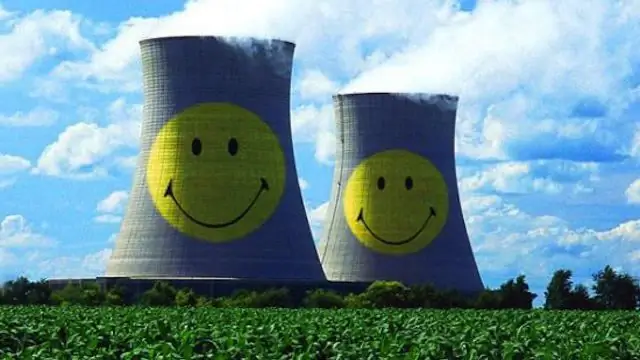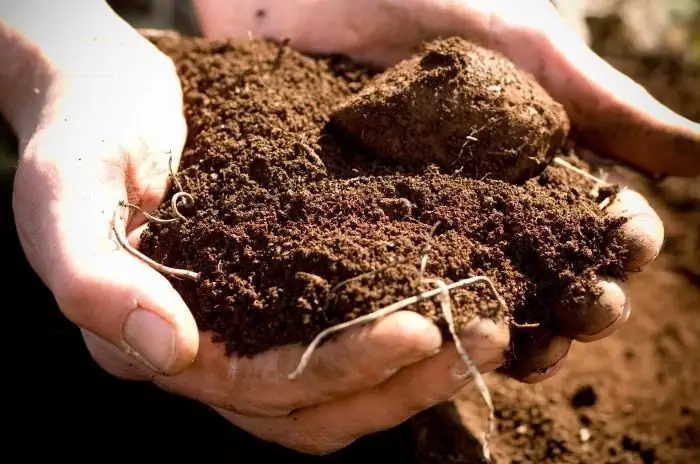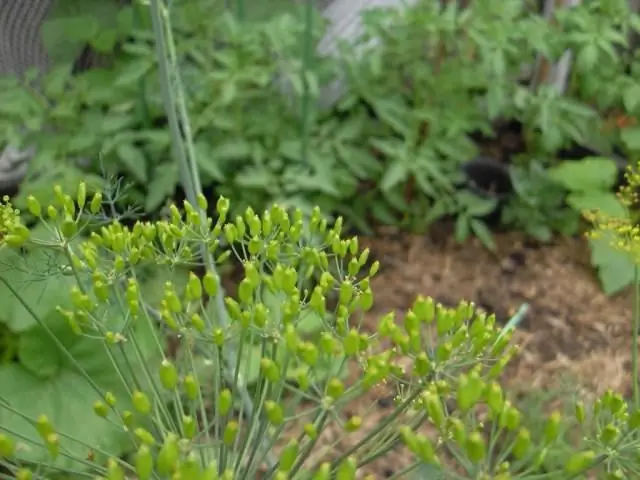2026 Author: Howard Calhoun | [email protected]. Last modified: 2025-01-24 13:10:25
Some experts who know the properties of plants well can determine at a glance what substances the soil is rich in, how much moisture and light certain areas receive, whether it is safe to grow fruits, vegetables and berries on this land. And all this - without any analysis. It would seem, just mysticism! However, in reality, he is simply well versed in the properties of soil indicator plants. A very useful skill that allows you to get a rich harvest and with a minimum of effort to keep the site in perfect condition. Therefore, it will be very useful to talk about some of these plants.
What are indicator plants?
Some plants thrive best in soil that is balanced and has moderate light and moisture. However, for others, for successful growth, it is precisely the areas with downgraded characteristics that are needed. For example, an excess or vice versa lack of certain trace elements, a large or small amount of water and sunlight. They became so thanks to millions of years of evolution - they grew in certain areas, adapted to suddenly changing conditions.

It is these plants that are usually called indicators. There are plants that are indicators of air, certain trace elements and conditions in a given area. In some cases, completely different indicators may grow nearby. For example, under a plot shaded by a lush crown of spruce, some herbs grow, and a couple of meters from them, completely different ones, for which it is very important to have a large amount of sunlight and heat for successful development. Of course, it is very useful to know about such features - in a completely unfamiliar area, you can decide where and which plants will grow and bear fruit best, and where it is better not to plant anything at all in order to avoid serious danger. Here are examples of indicator plants characteristic of different conditions and soil types.
About nitrogen
Nitrogen is one of the most important trace elements without which most plants cannot grow at all. It is used to build leaves and stems, build green mass. Its deficiency leads to the fact that many plants almost do not develop. Therefore, to know, at least approximately, how much nitrogen is contained in the soil in a certain area (more or less than the norm) will be useful for any summer resident and gardener.
Which soil indicator plants should I look out for?

If a caustic ranunculus, dioecious nettle, kupyr, ragwort, quinoa or tenacious bedstraw grows in some area, this can be called a good sign - it means that the nitrogen content in the soil significantly exceeds the norm. This isa major plus if you are going to grow crops such as pumpkin, cabbage, rhubarb, zucchini, eggplant, peppers and potatoes. It is these plants that are the main "absorbers" of nitrogen from the soil.
But if the soil is very poor in nitrogen, then you can probably see navel, wild carrots and stonecrops on it. These plants are one of the few wild plants that have almost no need for this important element. If you plan to grow some crops on such a plot, then it should first be enriched with nitrogen. This can be done in different ways. If you are in a hurry, it is best to fertilize the soil. If you have a lot of time, then plant more legumes here - beans, beans, peas. On the one hand, get rich peas by autumn (legumes have an amazing ability to consume nitrogen from the atmosphere). On the other hand, enrich the soil with nitrogen (the symbiosis of legumes with microorganisms allows them to transfer part of the bound nitrogen from the atmosphere to the ground). Thus, next year you get a plot where you can grow almost any crop - the problem of nitrogen deficiency is solved.
Acidity
Another important indicator on which the yield depends is the acidity of the soil. At a pH of 7, the soil is considered neutral. If the indicator is lower, then it is acidic, and if it is higher, then it is alkaline. There are certain plants that are indicators of soil acidity, which the summer resident should definitely know about.
A sure sign that the soil in the area is acidic can be blueberries, sour sorrel, bukharnik, erica, field mint and fieldnavel.

The choice of crops that will grow well in such a site is quite extensive. First of all, these are blueberries, cranberries, blackberries, raspberries, gooseberries, hazel. You can also reap a rich harvest if you plant carrots, corn, radishes, potatoes, cucumbers and any kind of cabbage - white, cauliflower and kohlrabi. Yes, most cultivated plants prefer acidic soil. True, for some, the best indicator is a pH in the region of 4-5, while for others, 5.5-6 is considered desirable.
But most cultivated plants do not like alkaline soil too much. It is quite easy to identify it by the abundance of field violets, toadflax and sowing alfalfa. Relatively few crops can be grown here. First of all, mountain ash, viburnum, some varieties of pears. The easiest, fastest and safest way to increase the acidity in the area is to add gypsum to the soil. Its amount depends on the level of alkalinity. After scattering the gypsum and digging up the ground, it is advisable to leave it alone for one season. In the spring it will be possible to start work - for sure it will be possible to get a rich harvest. As you can see, acid soil indicator plants can do a very good job!
High salinity
High s alt content in the soil is a real problem for summer residents in some regions of our country. The fact is that there are generally very few plants that can grow on such land. True indicators of high s alt content can be s altwort (hence such a plant), as well as a very unpretentious quinoa that grows almost everywhere.

Fortunately, some cultivated plants can be grown on such land. Their list is small, but still…
In this area it would be nice to grow sucker, Tatar honeysuckle, golden currant. In some cases, you can even grow pomegranate, quince, grapes, apricots, cherry plums and mulberries. Pretty good harvest brings sugar beets and gourds - melons, watermelons.
Reducing the salinity of the soil is generally very difficult - usually an excess of s alts gets along with the land used for irrigation. Therefore, this practice should be abandoned. Try to use only rainwater - collect it in capacious tanks and water the beds and plants only with it. Gradually, completely fresh water will be able to wash out excess s alt from the soil, and it will be possible to grow other crop plants on the site, in addition to those listed above.
Sand content
But the soil with a high content of sand is a real dream for many summer residents. It is quite easy to identify it - it grows in abundance, in addition to many other herbs, also mullein, as well as medium chickweed. These plants prefer light soil and the sand provides them with everything they need.
You can really grow any crops on such soil. True, you need to make sure that the balance of useful microelements is not disturbed - there are enough potassium, nitrogen and phosphorus. It would also not be superfluous to conduct an analysis of acidity - or to see if any of the indicator plants listed above grow on the site.
Any flowers, annuals, bushes and trees will perfectly take root here. Light soil contributes to the rapid development of the root system, which is the key to a rich harvest. There is no need to take any measures to reduce the sand content. The only thing you have to carefully monitor is a sufficient amount of water. The fact is that water easily passes through the soil saturated with sand, in contrast to the earth, which contains clay. Therefore, watering here should be regular, unless heavy rains occur at least two or three times a week.
Determining moisture
It's no secret that water is the basis of all life on Earth. The amount of moisture contained in the soil also depends on what crops can be grown on them. It turns out that too much water is even more dangerous than too little. But let's talk about everything in order.

On dry soils, wormwood and common chamomile are most often found. They have a fairly powerful root system and at the same time tiny leaves, which reduce moisture loss. Very few crops can grow on dry soil. These are mainly trees and shrubs: currants, sea buckthorn, raspberries, gooseberries, felt cherries and cherry plums. All of them have long roots that allow them to extract moisture from underground. But there are usually no special problems here - if you establish watering, then you can grow any other crops.
It is much worse if the site has soil moisture indicator plants such as field mint, horsetail, coltsfoot, meadowsweet. This means that the ground is too wet - manycrops simply won't be able to grow here as their root systems will rot.
It is best to choose bushes and fruit trees for the site. For example, apple trees, pears, plums, cherries and cherries. True, it is worth planting not in depressions, but on the contrary, pouring at least not too high - about 30-50 centimeters - hills. Moisture from here will leave faster. The harvest in such cases usually ripens later than elsewhere, but it is more plentiful, and the fruits are striking in size.
Excess clay
Clay soils often cause a lot of problems for summer residents. It is quite easy to identify them - dandelion and creeping ranunculus grow in abundance here. In the most advanced cases, they generally crowd out other plants.

Clay soil has several disadvantages. Firstly, it is very heavy - it is difficult for the root system to develop. And the earth is poorly saturated with oxygen - you have to loosen it manually. Secondly, the water leaves very poorly and slowly, which can lead to rotting of the roots. True, in a dry climate this is rather a plus - the water stays for a long time and waters the plants, instead of quickly sinking into the depths.
Shrubs and trees are best grown on such soil. A good choice can be currants, raspberries, blackberries, pears, plums, figs, cherries, apple trees. True, it is first necessary to dig holes, pour drainage on the bottom, then put a layer of compost or peat on top, top up with black soil, and only after that plant plants. Thanks to this, young seedlings will be able to develop quickly, and a strong, he althy tree can break through a layer of clay.
Unfortunately, any attempt to improve the clay soil in general is useless - except to take it away and replace it with a lighter one.
Heavy metals
There are also plants that are indicators of soil pollution. First of all, it's lead. Moreover, when you see various indicator plants of minerals, you should not rejoice. After all, this is a very alarming signal indicating a serious contamination of the soil. There may have been a hazardous waste dump or something similar.
Sleep-grass, pansies are considered to be indicators of soil pollution. If these plants actively grow on the site, then it makes sense to check the composition of the soil in a special laboratory. Unfortunately, there is no way to clean the earth - you will have to change it, and dig it to a great depth and bring in fresh. It is not worth growing vegetables and fruits here - there is a high probability of getting serious poisoning and causing terrible damage to he alth. So it is better to plant the plot with flowers or just sow with grass.
Illumination
Sunlight is very important for any plants. After all, it starts and supports photosynthesis, due to which leaves and fruits appear and grow.
An excess of light can be judged by such an indicator as the Canadian goldenrod. However, too much light is rare - the more, the better. The main thing is to water abundantly so that the plants do not dry out. On such a site you can grow absolutely any crops. True, young seedlings should be shaded, but at the same time they are protected from heat, not from light.

Herelack of lighting is a much more alarming sign. Some cultures simply cannot grow and develop successfully in the shade, often get sick and bear fruit poorly. It is easiest to identify such areas by the presence of gout and sour - these plants prefer to grow in the shade, as they do not like light too much. Fortunately, certain crops can be grown in such places. For example, tomatoes grow well in the shade. Yes, and rhubarb bears fruit well in areas where the sun rarely looks. Finally, almost all types of lettuce grow well in shady ground. Although you should not think that they do not need heat and lighting at all. If it is possible to grow them in a sunny area, then it is better to do this. But if a large piece of land, for example, behind a house, is empty, and other crops are dying here, then it is worth experimenting with tomatoes and rhubarb - the result will surely surprise you.
Conclusion
This concludes our article. Now you know exactly what the appearance of certain plants on the site means. And you will be able to use every square meter as rationally as possible in order to get a rich harvest. And if necessary, easily eliminate the negative features of the soil.
Recommended:
The depth of soil freezing is a very important indicator

Everyone dreams of their own home. Most decide to independently build a house on the territory already owned. Here you need to take into account the specifics of the location of the site and the climate. In different regions of the country, the depth of soil freezing varies greatly. Why is this indicator so important?
Nuclear power plants. Nuclear power plants of Ukraine. Nuclear power plants in Russia

Modern energy needs of mankind are growing at a gigantic pace. Its consumption for lighting cities, for industrial and other needs of the national economy is increasing. Accordingly, more and more soot from burning coal and fuel oil is emitted into the atmosphere, and the greenhouse effect increases. In addition, there has been more and more talk in recent years about the introduction of electric vehicles, which will also contribute to the increase in electricity consumption
Soil analysis - a comprehensive assessment of the state of the soil cover

Due to man-made activities, the soil becomes a place of storage of a large amount of harmful substances. Soil analysis is used to assess the general ecological state and safety of the soil cover, determine the chemical composition and suitability for agricultural activities
The largest power plants in Russia: list, types and features. Geothermal power plants in Russia

Russia's power plants are scattered in most cities. Their total capacity is enough to provide energy for the entire country
What kind of soil do carrots like? Soil for carrots and beets, onions and dill

Carrots are included in the main list of crops grown by Russian summer residents and gardeners. Like all root crops, this plant is not particularly demanding on development conditions, however, in order to get a rich harvest, it will not be superfluous to initially decide what kind of soil carrots love and correlate its requirements with the capabilities of a particular site

